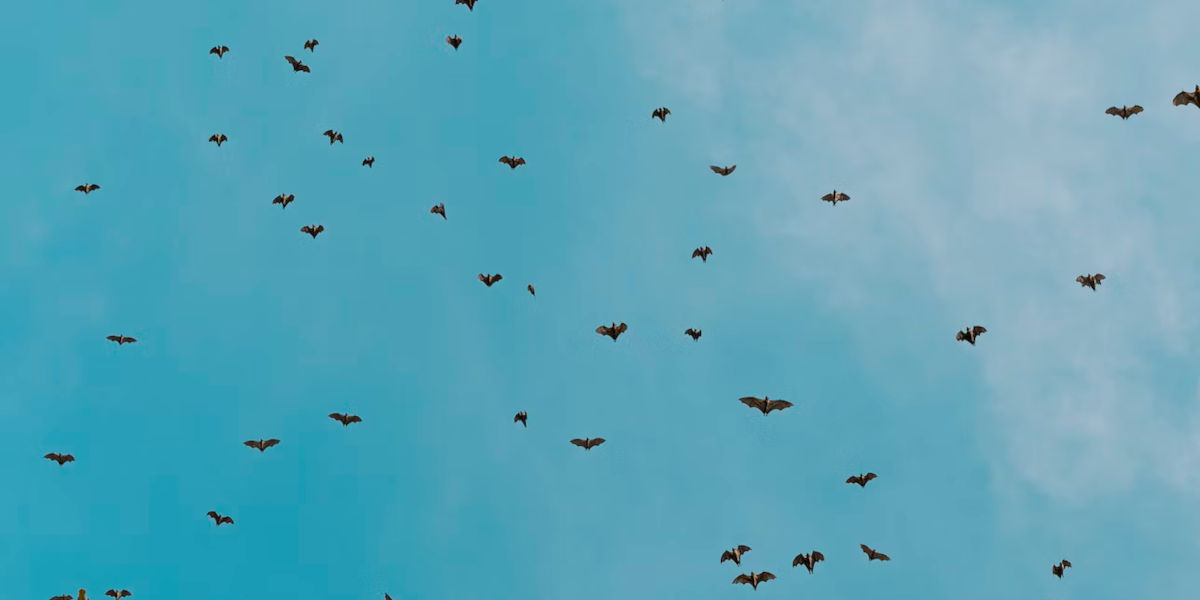There are several odd, yet alluring characteristics of bats that captivate our curiosity. Perhaps the most puzzling of these is the upside-down roosting behavior. Have you ever looked at a bat dangling down from a tree branch, and wondered 'why do bats hang upside down'? If so, you're in the right place to gain some understanding of bat behavior. This is a journey into the peculiar world of bats, where we'll unravel the mystery behind their inverted slumber, the science of bat roosting, and how this extraordinary conduct sets them apart in the animal kingdom.
The Unusual Upside-Down Behavior of Bats
When it comes to bat behavior, hanging upside down is their norm and it is actually right-side up for them. While this practice appears to defy the laws of nature, for bats, it has been a part of their evolutionary journey for millions of years. In fact, this peculiar habit is somewhat of an advantage to them. Let's delve into understanding why bats hang upside down.
In stark contrast to most birds or insects, bats don't lift off from the ground. Rather they fall into flight. As they hang upside down, gravity aids them in their takeoff. When they let go, they fall for a short distance before flapping their wings to soar into the sky. This evolutionary adaptation not only helps them conserve energy but also facilitates a quick getaway in case of encountering a predator.
Understanding Bat Behavior: Why Hanging Upside Down is Beneficial
Bat behavior is complex and fascinating, and the manner in which they spend most of their day—upside down—is not just an oddity. It serves several useful purposes. Owing to their unique physiology and the structure of their wings and legs, the aforementioned gravity-assisted flight isn't the only advantage they gain from hanging upside down.
When we dive deeper into understanding bat behavior, we find that their inverted posture has evolved to offer a host of advantages. From providing a safe haven from predators and a quiet place for daytime sleep, to creating a favorable position for childbirth—hanging upside down seems to work well for these nocturnal creatures. In fact, the most interesting aspect of this behavior is that it is a prevailing characteristic among almost all species of bats, suggesting its crucial role in their survival.
The Science of Bat Roosting: An Evolutionary Perspective
In order to fully comprehend why bats hang upside down, we need to dig deeper into the science of bat roosting. In evolutionary terms, roosting upside down has proven to be a successful adaptation to the ecological niche bats occupy.
The Physics Behind Bats Hanging Upside Down
The key reason for bats hanging upside down is due to a unique adaptation to facilitate flight. Bats, belonging to the order Chiroptera or "hand-wing", are the only truly flying mammal. But unlike birds, bats do not have the strength to take off from a standing or flat surface. Their wings do not generate enough lift, and their hindlimbs are too underdeveloped to support their wing flapping motion. This is where the upside-down hanging becomes a functional necessity rather than a peculiarity.
By hanging upside down from a high position, bats can fall into flight. Their tiny hind limbs release their grip on the roost, and their bat's weight plus gravity provides the initial momentum they need. As they fall, they stretch out their wings and catch the air, converting that momentum into lift. This extraordinary adaptation takes advantage of gravitational energy, allowing bats to take flight with minimal effort.
The Evolutionary Advantage of Hanging Upside Down
In addition to facilitating flight, there are a number of potential evolutionary advantages to this unusual lifestyle. Most other animals cannot maneuver while in such an inverted position, making the ceiling a relatively safe place for bats to roost and sleep. This aversion from predators, combined with the ability to live in large colonies, is a significant survival benefit.
The Physical Adaptation of Bats
But the question remains - how can bats comfortably rest and sleep while hanging upside down? Well, the answer lies in their specialized physical adaptations. Unlike human beings and many other animals, a bat's body and leg structure are uniquely designed to accommodate an inverted position. When a bat lands, its body weight pulls down on tendons that close claws, causing them to grip the surface. Unlike us, they don’t have to exert energy to hang on!
This locking mechanism allows bats to hang for extended periods without expending much energy. And the fact they hang upside down does not affect their circulation because their body is well-adapted to manage blood flow in this position.
Roosting Habits of Bats
Bats are known for their roosting habits. They typically favor dark and secluded areas for their roosts, such as caves, tree hollows, and man-made structures like barns and bridges. They are not limited to these places and can roost almost anywhere, thanks to their peculiar hanging style. This habit makes bats highly versatile and helps them thrive in a wide range of habitats across the globe.
In conclusion, hanging upside down is much more than an eccentric behavior for bats. From aiding in flight to protecting them from predators, this strange habit is actually a testament to bat's extraordinary adaptation in the face of survival. These mysterious creatures continue to fascinate scientists and animal lovers alike with their unique habits and lifestyle.




